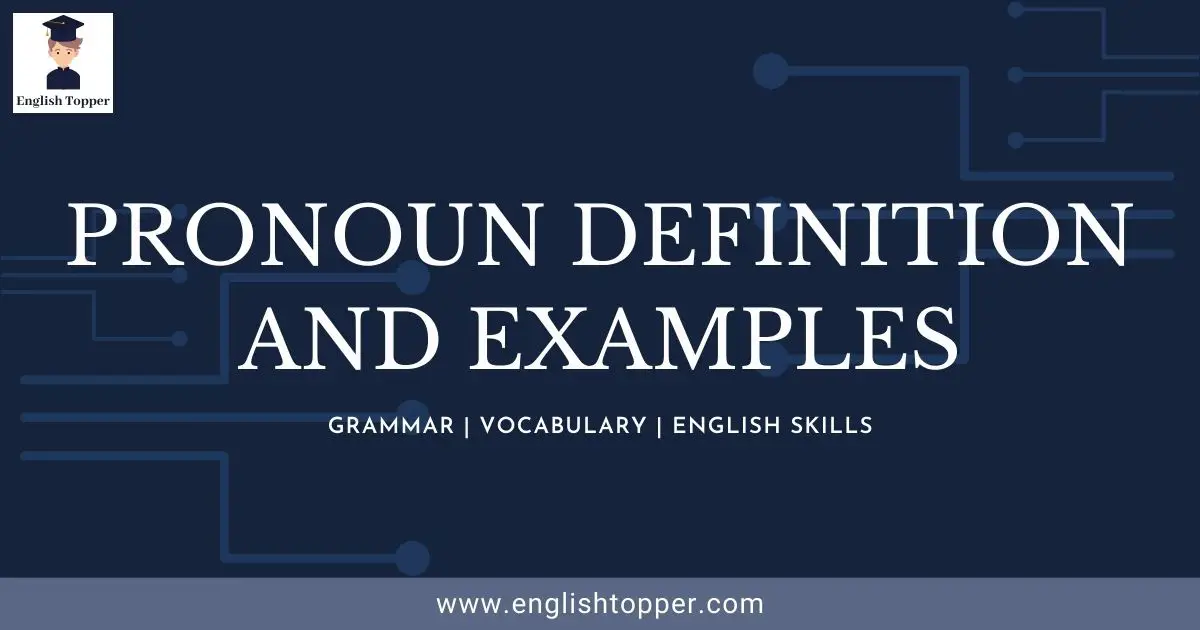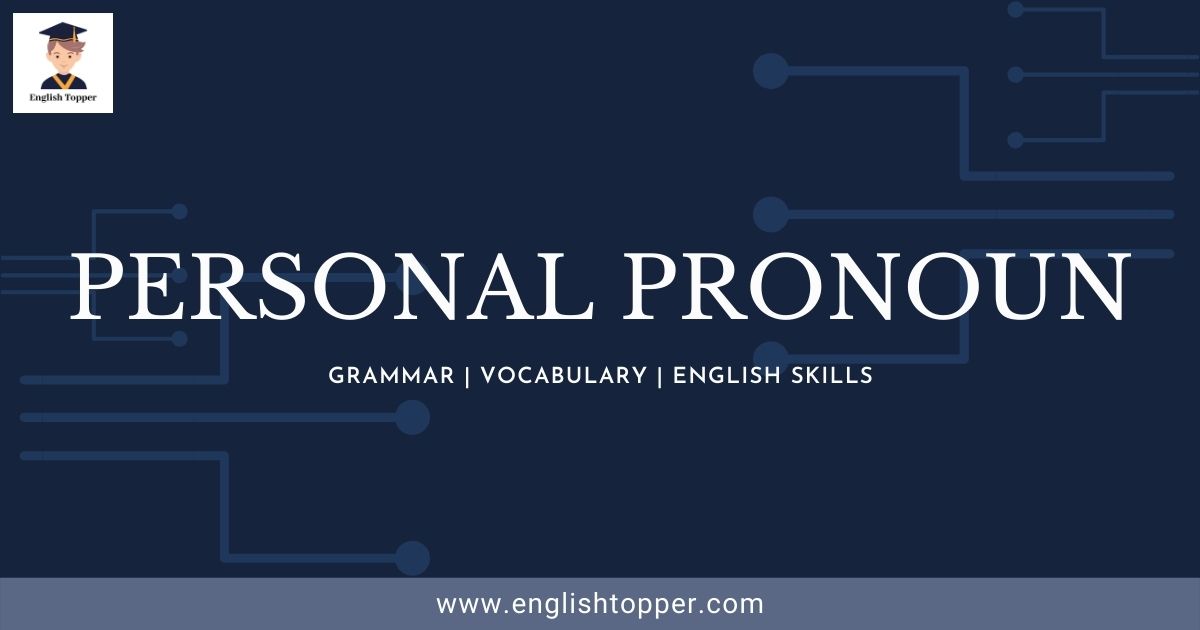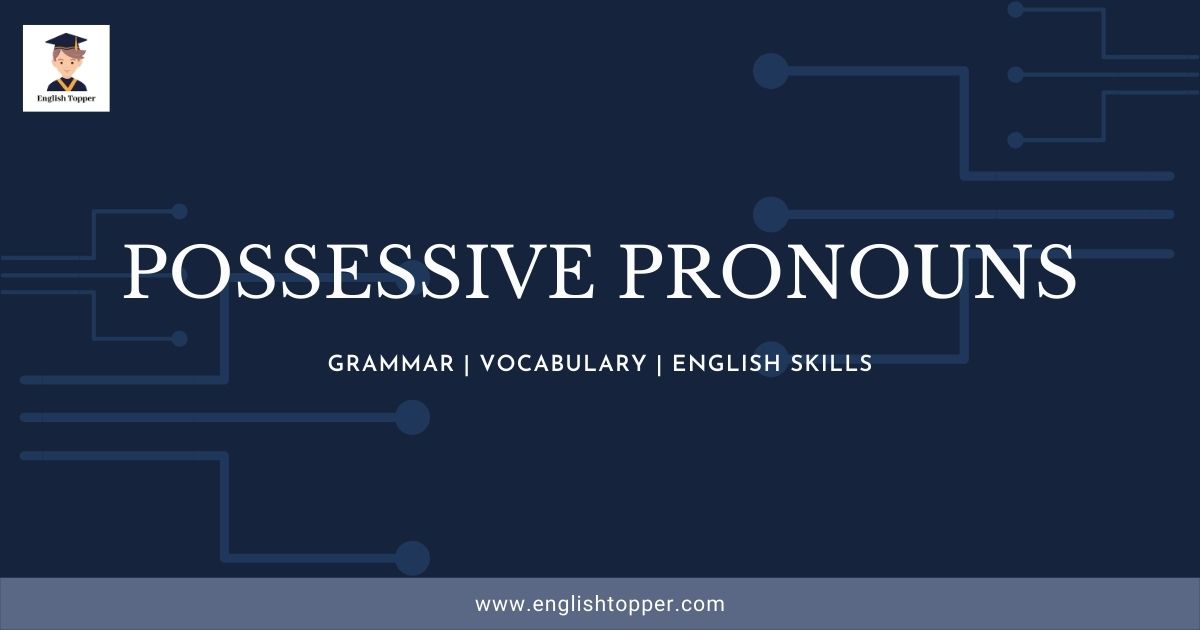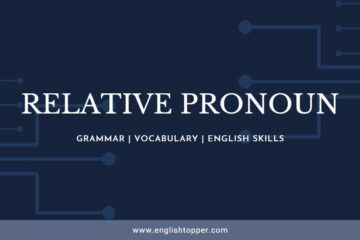Table of Contents
What is Pronoun in English Grammar?
Pronoun Definition and Examples: The pronoun is a part of speech which replaces the repeated Noun in the sentence. For example, he, she, it, we, they, you, etc.
The concept of the Pronoun is introduced so that the Noun can be replaced, and it has the same function as a Noun.
That means it can function as the subject, object (direct and indirect), object of a preposition, etc.
It is used in different forms depending on the usage in the sentence.
Now let us understand what is a Pronoun with a simple example.
Example Sentence:
A: Suraj is a good boy because Suraj likes to be kind to everyone. Now Suraj is studying in the 3rd class.
B: Suraj is a good boy because he likes to be kind to everyone. Now he is studying in the 3rd class.
Here, we can observe that the name Suraj has been repeated in the sentence A thrice (3 times).
So, instead of repeating the name Suraj, the word has been replaced with “he”. The Pronoun “he” is nothing but the name “Suraj”.
Sentence B sounds better than sentence A, right?
When to use Pronoun?
A pronoun is used when we are describing a person in a paragraph or an essay.
So, when the Noun (name) is appearing 2nd time, then it should be replaced with Pronoun. You can also start a sentence with a Pronoun.
Now let us understand the different types of pronouns which are there in English grammar.
What are the different types of pronouns?
There are 8 different types of pronouns in English Grammar. Those are,
- Personal Pronoun
- Object Pronoun
- Possessive Pronoun
- Reflexive Pronouns
- Intensive Pronoun
- Relative Pronouns
- Demonstrative Pronoun
- Interrogative Pronoun
What is Antecedent?
The antecedent is the noun (name of the person, thing, etc) that is going to be replaced by the Pronoun.
For example, if we say “he is going to be successful”.
Then you will ask who? Who is going to be successful? What is the name of the person?
These questions arise in your mind because We didn’t mention the name (Antecedent) and just used the Pronoun (he) in the sentence.
Now, if we say, “Tina is a good girl. She wants to become a doctor in the future.”
Here we understood that the reference of Tina (Noun) has been taken and she (Pronoun) is replaced in the above sentence.
Now we understood how important the Antecedent is. (Note: Here, Tina is nothing but an Antecedence)
Pronoun as Subject and Object
As we all know that the sentence contains a Subject and Object and the Pronoun can function based on the usage.
If you haven’t read our previous blog about sentences, then click here to read.
Here are some terms that you need to understand from the Pronoun tables.
- First Person View is nothing but self-reference (referring to ourselves).
- Second Person View is a reference to another person (referring to 2nd person).
- Third Person View is the reference to others (referring to everyone except you and 2nd person).
Refer to the below table to know how a Pronoun in a sentence can act as Subject and Object.
- Pronoun as a Subject
| View/Forms | Singular | Plural |
| First Person | I | we |
| Second Person | you | you |
| Third Person | he, she, it | they |
- Pronoun as an Object
| View/Forms | Singular | Plural |
| First Person | me | us |
| Second Person | you | you |
| Third Person | him, her, it | them |
The Pronoun usage in Genders
When we use pronouns in the sentence, we try to replace the Person’s name. But the main problem is that we need to identify the gender (either male or female).
For a male person, we need to use “he” as the subject in 3rd person’s view whereas, for a female person, we need to use “she”.
When the referring Subject is not a person (like places and things), then we need to use the Pronoun “it”. This applies to objects as well.
If there is more than one person, then we need to use “they” irrespective of any gender.
If you are using a male person as an Object, then use “him”. The same thing applies to a female person, i.e, her.
More examples of Pronoun
Here is a list of 10 examples of pronouns that you can refer to.
- He is good at solving problems in Statistics.
- I love watching movies at theatres.
- Harry wants a new phone, but he doesn’t have enough money to buy it.
- Sita wants to gift a ring to her best friend.
- She is not interested to meet new friends.
- We are going to attend the party tonight.
- They want to start a new business.
- You should attend today’s event because it is very important.
- I am happy today.
- They are not our friends.
Quiz Time! (Test your knowledge here)
#1. The functionality of the Pronoun is same as __________.
#2. The Pronoun is used to replace ________.
Answer: Noun
#3. Meghana is a calm person. She doesn't want to argue unnecessarily. Identify the Pronoun.
Answer: “She” is the pronoun in the given sentence.
#4. Harish goes for jogging every morning because he cares about his health. Identify the Antecedent.
Answer: “Harish” is the Antecedent.
#5. _____ don't talk to _____ because _____ are not good people. Fill in the blanks with appropriate Pronouns.
Answer: We don’t talk to them because they are not good people.
#6. A sentence cannot start with Pronoun. Is it true or false?
Answer: It is false.
#7. A Pronoun can be ____________.
Answer: A Pronoun can be Subject, Direct and Indirect Object, Object of Preposition, etc.
#8. Sita's favourite colour is blue. he has more blue dresses than any other colour. Correct and rewrite the Sentence.
Answer: Sita’s favourite colour is blue. She has more blue dresses than any other colour.
#9. Which pronoun is used for Singular Male gender? (3rd person view as Subject)
Answer: “he” is the Pronoun used for Singular Male gender as Subject.
#10. We don't talk to them because they are not good people. Identify the Subject (S) and Object (O) Pronouns.
Answer: The Subject Pronouns are “we” and “they” and Object pronoun is “them”.
Results
|
Getting your Trinity Audio player ready...
|
Hurray….. You have passed this test! 🙂
Congratulations on completing the quiz. We are happy that you have understood this topic very well.
If you want to try again, you can start this quiz by refreshing this page.
Otherwise, you can visit the next topic 🙂
|
Getting your Trinity Audio player ready...
|
Oh, sorry about that. You didn’t pass this test! 🙁
Please read the topic carefully and try again.
Summary: (Pronoun Definition and Examples)
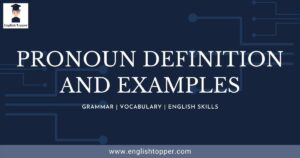
So, here is the overview of the topic which we have discussed till now.
- A pronoun is used to replace a noun which is being repeated more than once in the sentence.
- It is the same as a Noun in terms of functionality and usage.
- It is used based on gender and forms like Singular and Plural.
- Furthermore, it has 8 different types.
- We can start a sentence with a Pronoun.
- Without an Antecedent, we can’t find the identity of a person.
If you are interested to learn more, then you can refer to Wikipedia here.
I hope that you understood the topic “Pronoun Definition and Examples”. If you have any doubts regarding this topic, comment down below, and we will respond as soon as possible. Thank You.

